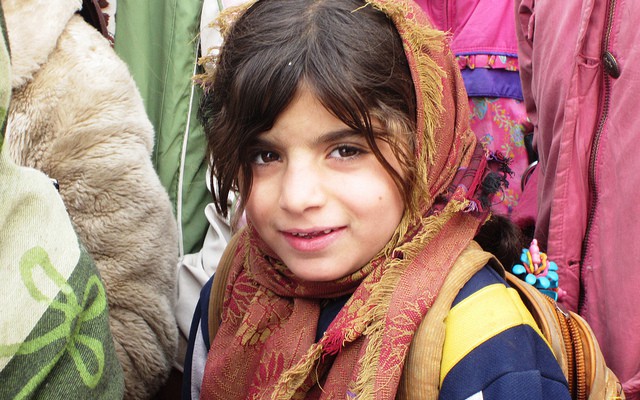Protective factors for social-emotional well-being in refugee children in Australia
Considering the global movement of refugee populations, it is important for us as a host nations to understand what can improve the lives and health of those we accept as refugees in Australia. We recently completed an unique longitudinal study following up 61 refugee children (<15 years) recruited between 2010 and 2014, at 13 and 31 months after arrival. We found encouraging results. Most children had developmental and wellbeing outcomes within the normal range by year 3 after arrival without any specific interventions except good access to community based primary health care and refugee nurses.
However a minority had persistently poor social-emotional outcomes and we wanted to understand the risk and protective factors so we can intervene early to improve their trajectory. Protective factors for normal social-emotional wellbeing were: originating from Africa (p=0.01), the child’s father present on arrival (p=0.019) and reduced stressful life events in the past year (p=0.045); the latter included changes in schooling or residence, death of a close family member, major change in financial state and marital separation. When considered cumulatively, additional protective factors included the child being under 5 years old, having family in Australia prior to arrival, living in close proximity to one’s own community, feeling supported by the general community and no pre-arrival trauma.
Some protective factors are amenable to intervention post arrival. This is especially important in children with fewer than 4 protective factors, who are likely to benefit from proactive follow-up and early intervention to enhance protective factors, buffer risk and thus improve outcomes. The important predictive factors from an intervention perspective are those that we can modify after the children have arrived. In this study these were found to be stability in the child’s school and residence, parental employment, financial and marital stability, proximity to one’s own ethnic community and external community support. This is very important for us to know as it enable host countries to actively address these factors in order to optimise health and wellbeing in refugee children.
The literature tells us that children generally thrive on a safe, predictable and nurturing environment with minimal stressors such as exposure to violence, discrimination and financial stress. The children who have arrived in the host country without their fathers are more likely to have been exposed to additional stressors as compared to those whose families have remained intact. For example their fathers may have been killed, or may have disappeared in their countries of origin or transit, leaving their mothers more distressed, fearful and financially less stable. This would have a direct impact on the mother’s capacity to protect and provide for her children and thus we may see that these children have poorer social-emotional wellbeing scores.
Similarly, children who have experienced stability in their schools, community support and a sense of belonging, will have better social-emotional wellbeing, which means they will be more able to make friends, learn and be successful in their new country. In our study we tried to test whether or not income, education level and prior exposure to violence (such as rape and/or torture) had an impact on child wellbeing but we found that these factors did not predict wellbeing. This may be because we need a bigger sample size, however, so we cannot be definitive about this.
Recommendations that are likely to contribute to improved health and wellbeing of refugee children settling in Australia include providing access to high quality health care, regular review and proactive follow-up for children with fewer than 4 protective factors, settling families in close proximity to supportive, welcoming communities, supporting education with stable schooling, homework and peer support and preschool/school readiness programs, promoting access to parental employment by promoting English proficiency, recognition of overseas qualifications, facilitating local work experience, referees and driver’s licence, and facilitating access to social inclusion through a wide range of sporting, art, cultural and skills-based programs.
The way forward is to trial interventions likely to make a difference and assess the impact of specific interventions in improving health and wellbeing. This will enable us to realise our potential as a nation to provide an environment that optimises the health and considerable potential of our refugee arrivals.
References
Zwi K, Woolfenden S, Williams K, Rungan S, Woodland L, Jaffe A. Risk and protective factors for refugee children in the first years of settlement. Archives of Disease in Childhood 2017;0:1-8.DOI:10.1136/archdischild-2016-312495. http://adc.bmjjournals.com/cgi/content/abstract/archdischild-2016-312495v1?ct
Zwi K, Rungan S, Woolfenden S, Williams K, Palasanthiran P, Woodland L. Development and psychological wellbeing: Results from a longitudinal study of refugee children. Journal of Paediatrics and Child Health 2017. DOI: 10.1111/jpc.13551
